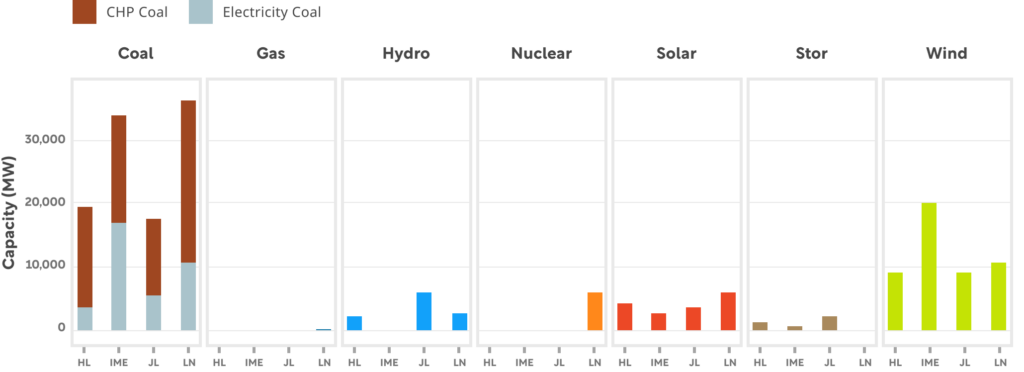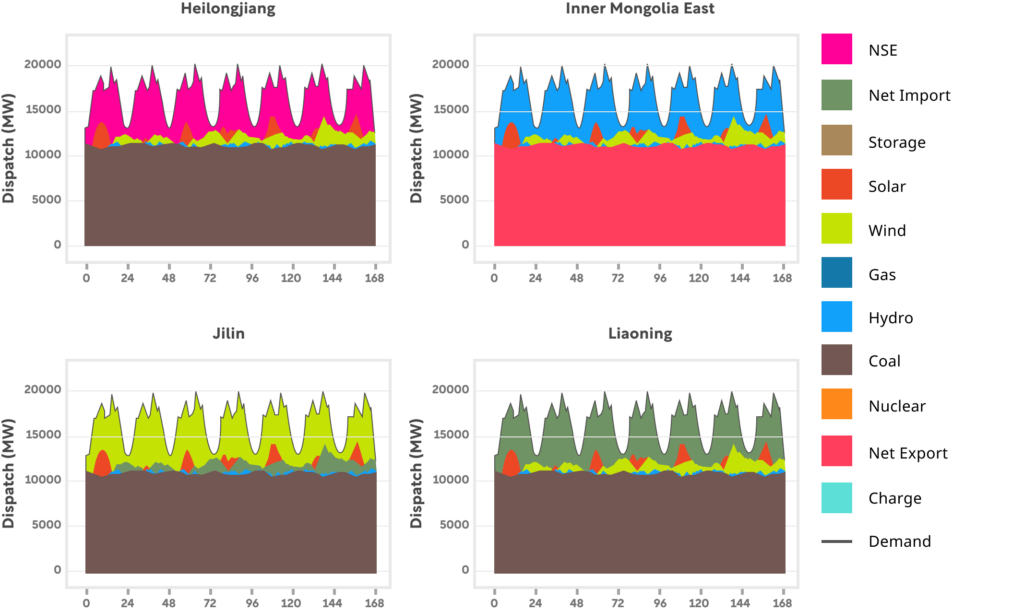Countries around the world are facing numerous challenges in maintaining the reliability of their power systems. With the rapid growth of renewable energy, emission reduction targets, and the involvement of many new technologies in the market, the power system is undergoing profound changes. In order to adapt to these changes, traditional monitoring and other reliability assurance methods are being reassessed. Many countries are implementing or considering the implementation of two measures: improving seasonal reliability reports to manage hidden risks and issuing official analysis reports after power outages to identify causes and take policy responses.
On February 17, 2023, the Energy Bureau issued a notice titled “Notice on Improving the Analysis System of Power System Operation and Strengthening the Risk Management of Power System Operation Safety.” This notice takes a solid step towards enhancing power system reliability and early identification of power system risks. At the system level, the notice stipulates regular operational analysis to mitigate system risks. Specifically, the notice requires grid companies to conduct three system operational analyses each year: annual system operation analysis, winter peak demand analysis, and summer peak demand analysis. In addition, it also requires a summary of the previous year’s system operation and an analysis of “power safety accidents within the regulatory scope.” These analyses will become the cornerstone of ensuring power system reliability and are particularly valuable during the current power system transformation.
Researchers from the Regulatory Assistance Project, in collaboration with North China Electric Power University and the University of California, San Diego, conducted a prospective winter peak demand analysis of the Northeast China power grid’s operating modes. This analysis drew on cutting-edge methods for resource adequacy analysis internationally. This report aims to provide examples and explanations of these system analysis methods based on the requirements outlined in the notice and conducts post-analysis of power shortage accidents in Northeast China in 2021.
Introduction to Power Resource Adequacy Analysis System
Internationally, many countries and regions require relevant institutions to conduct regular short-term power resource adequacy analysis. The two main types of analysis include post-accident analysis reports and seasonal system adequacy outlook reports. The post-accident analysis report typically refers to a fundamental cause analysis report written and published by an official commission after a large-scale power outage or other system accidents. It discusses the improvement of policies and market rules and helps decision-makers, market participants, and end-users understand the policy impact and make informed judgments about the causes of the crisis. Seasonal system operational analysis usually refers to advance assessment of quarterly peak electricity demand, analyzing from the perspective of system security, and making contingency plans for potential system stability risks.
These regular short-term power system analyses play a crucial role in local power systems worldwide. In Europe, legislation was passed in 2019 to update the requirements for short-term power system adequacy analysis. The current policy requires the “European Network of Transmission System Operators for Electricity” (ENTSO-E) to conduct two quarterly power system adequacy analyses per year using approved analytical methods. Similar to the notice issued by the Energy Bureau, each seasonal outlook includes an evaluation of future short-term power resource adequacy and a summary of the previous quarter. Based on these analyses, the EU member states adjust their future energy reserves and take necessary measures. For example, to prepare for the winter energy supply shortage in 2022-2023, the winter power system adequacy analysis in the EU identifies the highest-risk periods and countries and includes ongoing contingency measures, considering early measures that high-risk countries can take.
Furthermore, post-incident summary reports of major power crises play an indispensable role in improving the reliability of the power system. These summary reports first describe the occurrence of the incident and then identify the root causes of the power crisis based on dispatch and operational data, providing important guidance for future improvements in the power system. All power planning is based on a series of assumptions. However, as natural conditions and the power system evolve, these assumptions may deviate from reality and ultimately lead to unforeseen risks. For example, the post-incident summary report of the 2020 California power crisis found that the large-scale blackouts did not occur during peak load as previously anticipated but rather during the peak net load (load minus wind and solar generation). Power planning based solely on the highest system load may not support the increasing emphasis on short-term flexibility in the new energy systems. Policy-makers who realized this adjusted their planning processes and placed greater emphasis on acquiring sufficient power resources during peak net load periods. In conclusion, reflecting on power crises can better identify the shortcomings of the current power system and its planning, allowing for timely improvements.
Model and Report Results Discussion
By reviewing media reports and official notifications, we have summarized the possible factors that led to the 2021 autumn power shortage in Northeast China. These factors include economic recovery and a surge in electricity demand, rising coal prices and supply shortages, the coal-fired power generation pricing mechanism, contractual obligations for interregional power transmission, and wind power generation performance. These potential factors inspired the design of the model scenarios. Subsequently, in the study of winter peak demand analysis for 2022/2023, we conducted a more detailed description and analysis through modeling to assess the actual impact of these potential factors on the adequacy of resources in the Northeast China power grid.
The model encompasses resource adequacy analysis for the Northeast China power grid, including Inner Mongolia, Liaoning, Jilin, and Heilongjiang, for two months during the winter of 2022/2023. Specifically, the model selects four weeks in December 2022 and February 2023 to assess the resource adequacy of the Northeast China power grid under various scenarios during these eight weeks. The study uses the Unit Commitment and Economic Dispatch (UCED) model, which considers power generation, consumption, and interprovincial power transmission, to optimize the allocation of resources across the entire Northeast China power grid. This includes coal-fired power (combined heat and power and pure power plants), gas-fired power, hydroelectric power, nuclear power, solar power, energy storage, and wind power resources. The specific installed capacity is detailed in Figure 1. Additionally, the model considers the transmission capacity and line losses between provinces based on the current ultra-high voltage transmission lines’ voltage and location.

This economic dispatch model simulates the equal dispatch of all resources based on the lowest marginal cost in an efficient regional spot electricity market. Although the model differs from the current operational paradigm of the real power grid, it discusses how the power system can efficiently utilize existing resources and achieve cost-effective dispatch in an ideal scenario. Other scenarios assess the impact of various real-world factors on resource adequacy, such as increased electricity demand and reduced renewable energy generation due to extreme weather, reduced coal-fired power generation due to high coal prices, and priority transmission to North China.
The results of the model indicate that, taking the winter of 2022/2023 as an example, if the Northeast power grid operates well and undergoes coordinated economic dispatch through a regional electricity spot market that effectively utilizes resources, the power system in the Northeast would have sufficient resources to meet the electricity demand even in the face of extreme weather conditions that cause a decrease in renewable energy generation and an increase in electricity demand. However, if multiple factors that make the system inflexible are added on top of extreme weather conditions, the Northeast power grid would be unable to supply electricity to the entire society, resulting in widespread power rationing or even blackouts. These large-scale power rationing and blackouts would primarily occur in Heilongjiang and Liaoning provinces, and they often happen during periods when the power transmission from the Mongolian Eastern power grid to these provinces is relatively low.

Based on the analysis in the report, we believe that the pricing of coal-fired power should be determined by the regional electricity market as soon as possible. Compared to the paradigm of individual provincial dispatch, establishing a Northeast regional electricity spot market is more suitable as a basis for fair compensation for all resources. The regional power grid can arrange dispatch more efficiently and flexibly, encourage dispatchable resources to be utilized when the system needs them, and make flexible use of more renewable energy generation through inter-provincial power transmission during periods of high solar and wind power generation. In its “Implementation Plan for Accelerating the Construction of a Clean Energy-Strong Province in Liaoning Province,” Liaoning province has proposed to preliminarily establish the Northeast Regional Energy (Electricity) Trading Center during the “14th Five-Year Plan” period. If this trading center can coordinate the dispatch of electricity resources throughout the entire Northeast power grid and set reasonable prices accordingly, the problem of coal-fired power generation hanging in the market would naturally be resolved.
Based on international experience and an understanding of the overall situation in the Northeast region and China, we have conducted a retrospective analysis of peak load winter demand and power incidents in the Northeast power grid area, with the hope of providing valuable insights for future assessments of power system resource adequacy.
When considering power reliability issues, the focus of the power system should not only be on whether there is sufficient thermal power generation capacity to meet peak loads but also on optimizing the utilization of various resources based on regional spot markets and inter-provincial power transmission. The market mechanisms and regulatory policies, which constitute the “software” part of the power system (such as dispatch operations, government regulations, market rules, business models, and incentive policies), are equally important as the physical components (“hardware” part) of the power system, such as power plants and transmission lines. Only by doing so can we maximize the advantages of the new energy system and achieve multiple policy goals, including power reliability and carbon reduction.